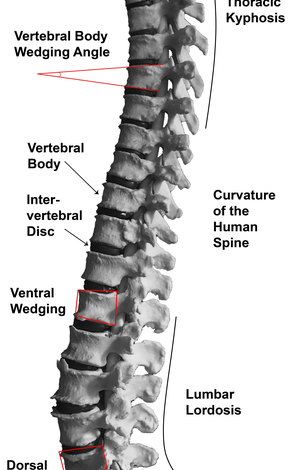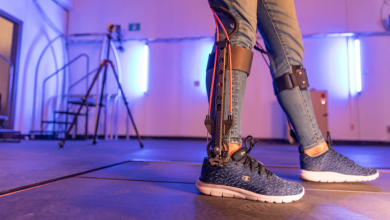Lower back pain secret could be unravelled with the help of Neanderthals

In a new study researchers have look at Neanderthals for possible ways to unravel lower back pain secrets.
Researchers say that by examining the spines of Neanderthals, an extinct human relative, we may be able to explain back-related ailments experienced by humans today. The researchers are focusing on spine’s curvature, which is caused, in part, by a wedging, or angling, of vertebrae and the intervertebral discs—the softer material between the vertebrae.
Neanderthals have long been thought to have a different posture than modern humans. Scientists say that they are intrigued by the wedging of Neandertals’ lumbar, or lower, vertebrae—their spines in this region curve less than those of modern humans studied in the U.S. or Europe.
However, much of this view was based on an analysis of modern humans beginning in the late 19th century—well after the onset of industrialization, which significantly altered our daily lives. Furniture, for instance, became more widely available and desk jobs more prevalent—both of which encouraged sitting and, with it, changes in posture. These changes were coupled with a reduction in high-activity occupations, such as agriculture. In addition, specific afflictions became associated with working conditions that elicit poor posture.
Previous studies have shown that higher rates of low back pain are associated with urban areas and especially in ‘enclosed workshop’ settings where employees maintain tedious and painful work postures, such as constantly sitting on stools in a forward leaning position.
In other words, by examining spines from humans who lived in the post-industrial era, past researchers may have mistakenly concluded that spine formation is due to evolutionary development rather than changed living and working conditions.
To address this possibility, Williams and his colleagues examined both pre-industrial and post-industrial spines of male and female modern humans from around the world—a sample that included more than 300 spines, totaling more than 1,600 vertebrae—along with samples of Neanderthal spines.
Overall, they found that spines in post-industrial people showed more lumbar wedging than did those in pre-industrial people. Moreover, Neanderthals’ spines were significantly different from those in post-industrial people but not from pre-industrial people. Notably, the scientists found no differences linked to geography within samples from the same era.
Nonetheless, the distinctions in spine formation between pre-industrial and post-industrial humans offer new insights into back conditions facing many today.

